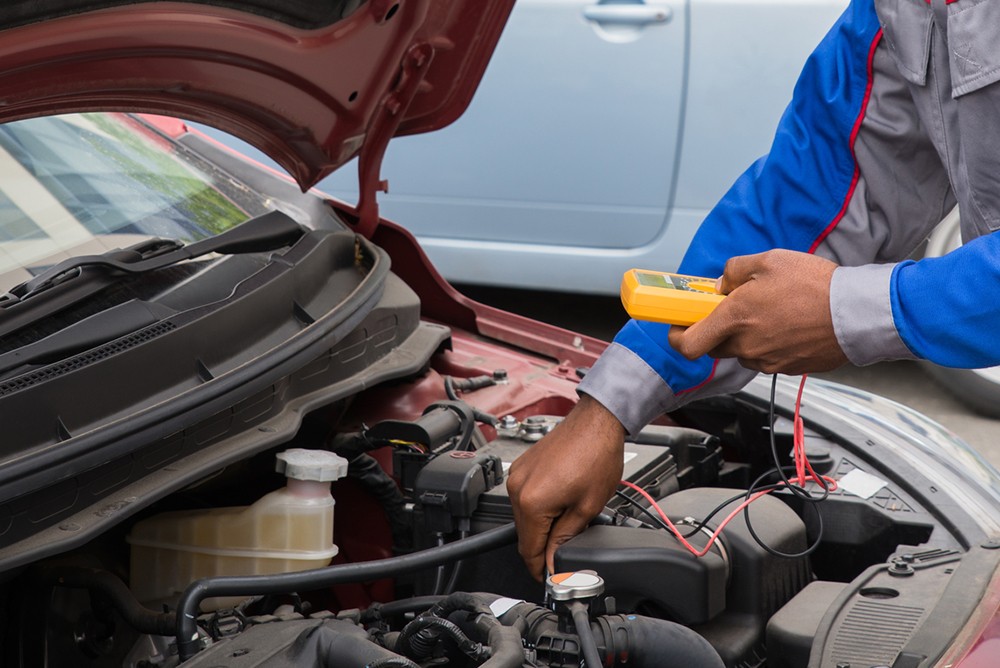
You’ve stowed the camping equipment, racked the canoe and already set your sights on winter sports gear. What about taking stock of your vehicle?
“We already have had snow showers in North America,” said Joshua Lewis of the Colorado State Troopers. “The biggest problem we see on autumn roadways is drivers who are not prepared for the arrival of inclement weather.
Colorado roads pose the same kind of driving challenges as Canadian streets and highways.
“Vehicles don’t have proper tires or tread depth,” Trooper Lewis, referring to the challenges of winter driving.
Trooper Lewis blamed tire issues for one of the most common autumn accidents: vehicles sliding into center meridians or street guardrails.
Faulty brake systems were identified by Trooper Lewis as another major issue. Hot summer roads wear down brake pad lining and put strain on other brake system components that can leave vehicles stranded.
“That tow truck you call may take hours to arrive.”
Those problems can turn up unexpectedly during autumn road trips, especially for trucks and large recreational vehicles.
“It comes down to knowing your vehicle and how it is supposed to operate,” said Trooper Lewis, who has worked as an officer for the past 15 years. “We perform regular inspections on vehicles for work, ideally daily.
“For me, I've found that the cost of routine maintenance and fixing minor problems on my personal vehicles saves a lot of money, time, and heartache later on.”
An autumn inspection establishes a baseline for vehicles in Officer Lewis’ household and also helps him avoid surprises. It addresses issues related to summer driving–road construction, hot weather, miles piled up on the odometer.
By revealing minor issues before they become major problems, the inspection report provides a roadmap for budgeting maintenance and repairs. Preparing for winter may uncover some additional considerations not needed for spring and summer travel.
A certified or factory-trained technician can help identify issues before they become expensive or life-threatening problems in harsh Canadian winters. Before heading out on autumn excursions. Include the following items in your autumn multipoint inspection:
- Tire tread wear. Do your tires have enough tread to drive safely on slick autumn roads?
- Inspect leaks, frayed hoses and worn belts. Cold weather makes old rubber as well as plastic parts harden and crack.
- Test battery voltage. Cold temperatures can cause a failing battery to go dead overnight.
- Check battery cable connections and other charging components such as the alternator. Rust, corrosion and crusty terminals can reduce battery power.
- Replace wiper blades. Ultraviolet rays of summer dry out and crack wiper blades, rendering hardened blades ineffective during autumn storms.
- Consider specialized blades. If you live in an extreme environment, consider blades with rubber compounds that remain pliable in freezing temperatures.
- Inspect the climate control system for leaks and proper fluid.
- Ask about winter coolant intended for extreme cold temperatures. A 50/50 mix of coolant to water may suffice in milder climates.
- Check the windshield washer reservoir and fill to the recommended level. Wiper fluid gets used up quickly when traveling along grimy roadways.
- Inspect wiper spray nozzles for clogs or obstructions that may prevent proper operation when you need them most.
- Make sure tires are properly inflated and make sure there’s plenty of tread. Check for uneven wear
- Review your vehicle manual for seasonal recommendations. Ask whether your vehicle is due for a climate control system flush.
Copyright © 2024 by Sensible Driver. All rights reserved.